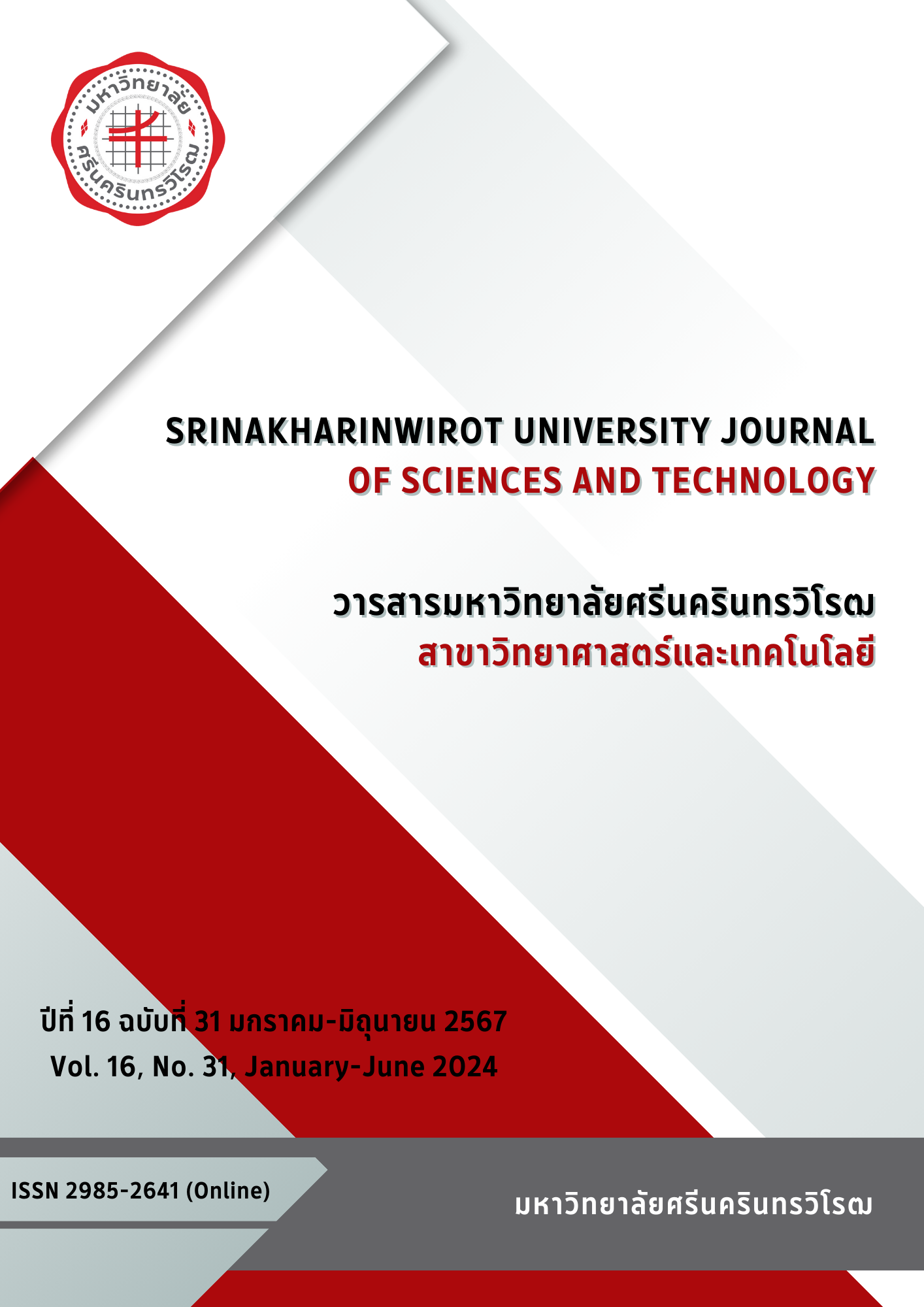EFFICIENCY IMPROVEMENT IN THE PROCESS OF FIREPROOF STEEL DOORS
Keywords:
Work Study, Fireproof Steel Door, Efficiency ImprovementAbstract
The objective of this research is to increase the efficiency of fireproof steel door process. The company's products have increased orders while production capacity is limited. It is therefore not possible to produce and deliver on schedule. It was discovered that some processes in the production process resulted in waste. The research process begins with studying thoroughly all fireproof steel door process. Then, use the Why-why Analysis principle to identify the root causes and the ECRS principle to find potential solutions. According to the data analysis, some processes were still not operating at their maximum potential. Some employees did not work with full capability. Consequently, the process can be improved by rearranging the task orders and use tools to minimize travel distance such as trolley and buckets of door components. After improvement with a decrease in production time of components from 396.87 minutes to 320.17 minutes, increase line balancing efficiency from 74.81% to 75.98%, and increase productivity from 28 doors per week to 34 doors per week, or by 21.42%.
Downloads
References
Suwanbutwipha, T. (2009). Strategies for Efficient Production Line Balancing. Bangkok: Intelrific Institute.
Sitticharoen, W. (2004). Work Study (4th ed.). Bangkok: National Innovation Agency.
Rijiravanich, W. (2005). Work Study: Principles and Case Studies (3rd ed.). Bangkok: Chulalongkorn University Press.
Kanjanapanyakhom, R. (2009). Industrial Work Study. Bangkok: Top Publishing.
Buaphan, S. (2020). Productivity Improvement in the Electronics Industry [Unpublished Master’s Thesis]. Silpakorn University.
Muangngeon, A. (2019). An Application of Lean Technique (ECRS+IT) to Efficient Book Return Process for Library and Information Center, NIDA. Bangkok: NIDA. Retrieved from https://www.km.nida.ac.th/th/images/PDF/research/atire.pdf
Sansamat, Y., Chunama, C., and Choomrit, N. (2022). Efficiency Improvement of Ultra Broadband Transceiver Manufacturing Process. Journal of Engineering and Innovation, 15(3), 130-141.
Kanoksirirujisaya, N. (2021). Wastes Reduction in HDD Part Production Line Using ECRS Techniques. Journal of Science and Technology Thonburi University, 5(1), 77-91.
Keaitnukul, W. (2018). A Line Balancing of the Aluminium Frame Assembly Processes Case Study: A Sample Company. Thai Industrial Engineering Network Journal, 4(1), 49-58.
Nisa, A. K., Hisjam, M., and Helmi, S. A. (2021). Improvement of work method with eliminate, combine, rearrange, and simplify (ecrs) concept in a manufacturing company: A case study. IOP Conference Series: Materials Science and Engineering, 1096, 1-10, https://doi.org/10.1088/1757-899X/1096/1/012016
Mayank, S., Shah, S., Patel, S., Patel, R., and Pansuria, A. (2012). To Improve Productivity by Using Work Study & Design a Fixture in Small Scale Industry. International Journal on Theoretical and Applied Research in Mechanical Engineering, 1(2), 75-81.
Mengistu, M. (2019). Line Balancing Techniques for Productivity Improvement. International Journal of Mechanical and Industrial Technology, 7(1), 89-104.
Asariella, F., and Rahmaniyah, D. (2020). Increased Line Efficiency by Improved Work Methods with the ECRS Concept in a Washing Machine Production: A Case Study. Jurnal Sistem dan Manajemen Industri, 4(1), 13-29.
Technology Promotion Association (Thailand-Japan). (2018). Kaizen Society: Motion Economy. TPA News. Retrieved from https://www.tpa.or.th/tpanews/upload/mag_content/141/ContentFile2785.pdf
Wattanasungsuth, N., and Meethom, W. (2021). Improvement of Pressing Process in Automotive Industry. The Journal of Industrial Technology, 17(3), 79-98.
Downloads
Published
How to Cite
Issue
Section
License
Copyright (c) 2024 Srinakharinwirot University Journal of Sciences and Technology

This work is licensed under a Creative Commons Attribution-NonCommercial-NoDerivatives 4.0 International License.
Srinakharinwirot University Journal of Sciences and Technology is licensed Under a Creative Commons Attribution-NonCommercial-NoDerivs 4.0 International (CC-BY-NC-ND 4.0) License, Unless Otherwise Stated. Please Read Journal Policies Page for More Information on Open Access, Copyright and Permissions.



